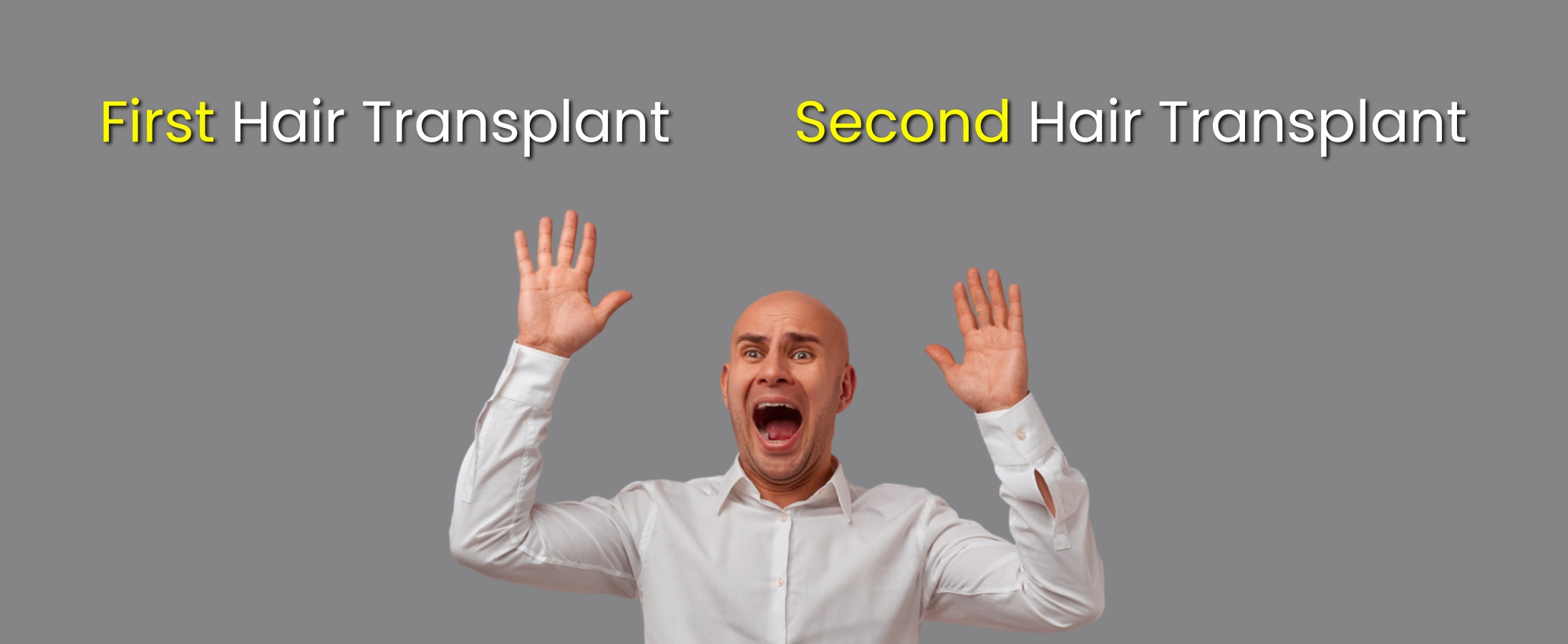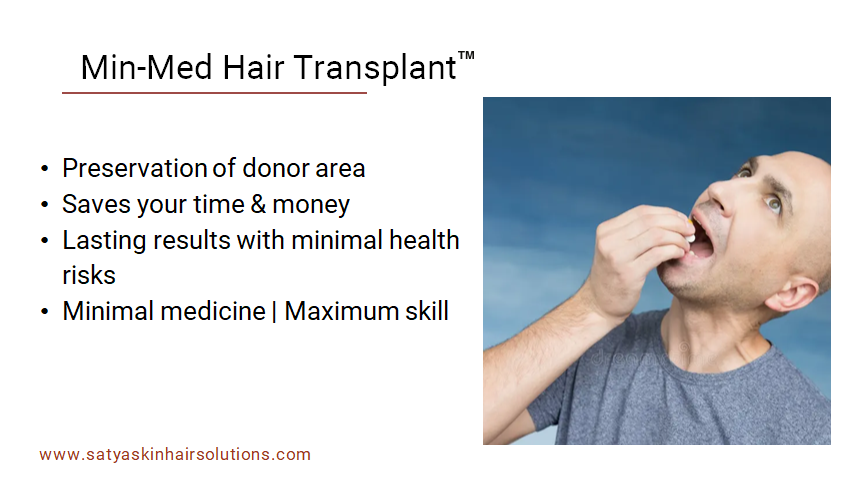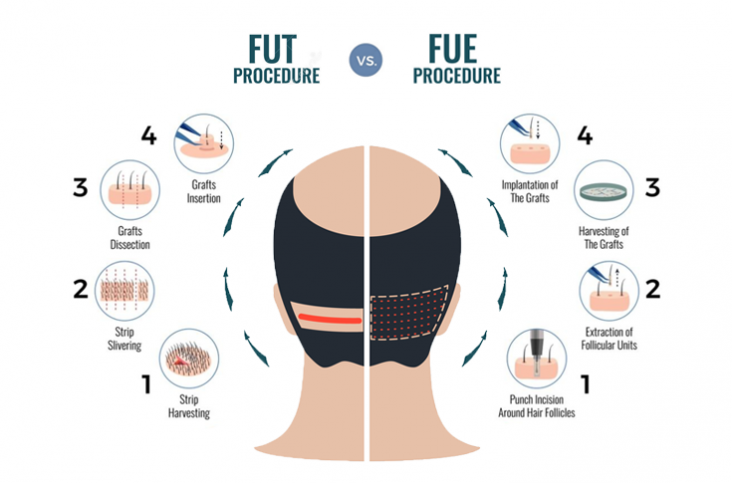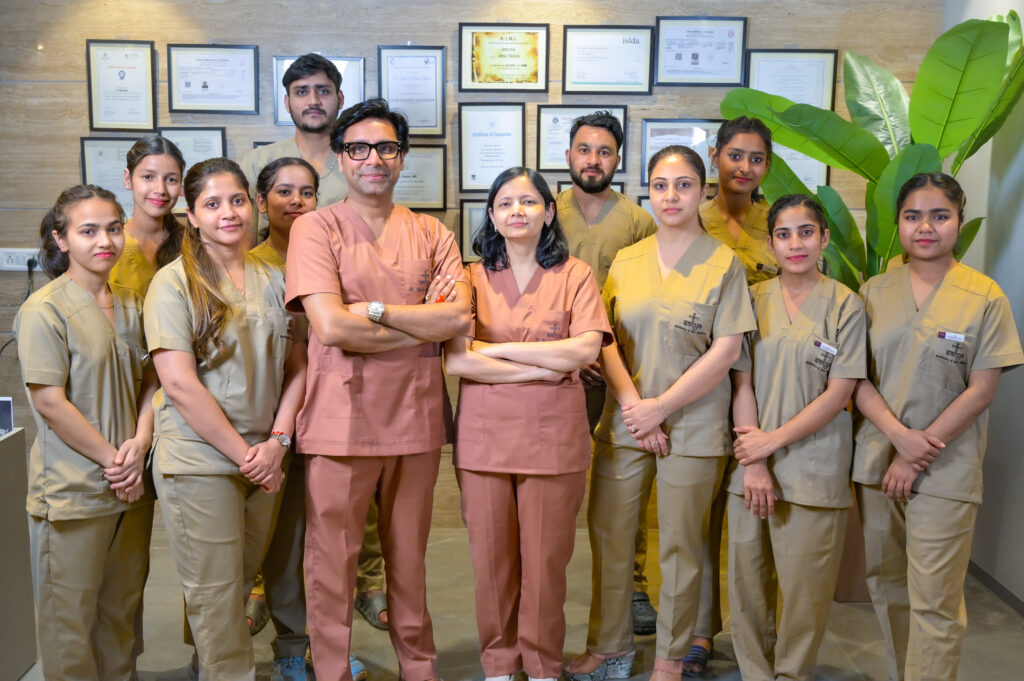
Why Your Second Hair Transplant Didn’t Match the Results of Your First
For many patients, the outcomes of their initial hair transplant are satisfying and life-changing. However, On a second transplant, the result sometimes falls short of the standards established by the first. Patients are left disappointed and confused as to why the same procedure did not produce the same outcomes.
Founder and Chief Hair Transplant Surgeon at Satya Skin & Hair Solutions, Dr. Shail Gupta, outlines the causes of this disparity and how inadequate methods, poor planning, and dependency on drugs could all contribute to this issue.
Why Second Hair Transplants Often Disappoint
There are three primary reasons why second transplants don’t match the results of the first:
1. The Medication Effect Has Plateaued
In many cases, the impressive results of the first transplant were 80–90% due to medications like finasteride or minoxidil, and only 10–20% from the actual transplant.
By the time of the second transplant, the medication effect has either reached its peak or has begun to decline due to tolerance.
Without this extra push or “free hair” from medication, the second transplant can’t replicate the same level of improvement, even with continued medication use at the same dose.
2. Diminished Quality of Donor Hair
If the first transplant was done using the FUE technique, clinics typically cherry-pick the best grafts—those with multiple hair units.
For the second transplant, the donor area often only has single-hair grafts left, resulting in fewer hairs per graft and poorer overall density.
3. The Problem with Repeat FUE Procedures
FUE is a blind procedure, and the angle of hair beneath the skin can change due to
scarring from the first surgery.- During a repeat FUE, many grafts are transected (cut through) or wasted because the punches cannot account for these angle changes.
- Scarring in the donor area further reduces the yield and compromises the quality of the grafts.
Why FUT Is the Best Approach for Second Transplants
For patients undergoing a second or repair transplant, the FUT technique (Follicular Unit Transplantation) offers significant advantages:
- Microscopic Precision: FUT allows grafts to be harvested and dissected under a microscope, ensuring that every graft is intact and usable.
- No Graft Wastage: Unlike FUE, FUT eliminates the risk of transected grafts caused by scarring or angle changes in the donor area.
- Maximizing Donor Area: FUT enables the surgeon to extract grafts from areas untouched by FUE, preserving the remaining donor hair for future needs.
Why Many Clinics Avoid FUT
Despite its advantages, most clinics avoid FUT because:
- Lack of Skill: FUT requires advanced training and precision, which many clinics have not mastered.
- False Narratives: Clinics often discredit FUT, saying, “Who does FUT these days?” or promoting FUE as the “best” technique. This misinformation hides their inability to perform FUT.
- Profit-Driven Approach: FUE is faster and more marketable, even if it compromises long-term results.
The Role of Over-Medication in Second Transplants
Many times, clinics try to offset their lack of knowledge or bad practices by:
- Increasing Medication Dosage: To artificially increase outcomes, patients are sometimes prescribed more finasteride, dutasteride, or oral minoxidil.
- Ignoring Long-Term Risks: This over-reliance on medications does nothing to solve the basic problems of inadequate surgical planning and puts patients in danger of side effects like hormone imbalances.

The Ethical Alternative: Satya’s Balanced Approach
At Satya Skin & Hair Solutions, we believe in providing ethical, skill-driven solutions for second and repair transplants.
What Sets Satya Apart?
- Expertise in FUT and Combination Techniques:
Unlike most clinics, we offer FUT and combination procedures to maximize graft yield and ensure no graft wastage.
- Minimal Medication Dependence:
We avoid relying on high-dose medications to create results, focusing instead on surgical skills and strategic donor management.
- Transparent Consultations:
We educate patients about their donor limitations, medication tolerance, and realistic outcomes to set the right expectations.
- Customized Plans for Long-Term Results:
Every treatment plan is tailored to the patient’s specific needs, preserving donor hair and ensuring sustainable results.

A Word from Dr. Shail Gupta
“The disappointment of a second transplant often comes down to poor planning and over-reliance on medications in the first. At Satya, we focus on ethical practices, advanced techniques, and long-term strategies to ensure that every transplant builds on the previous one, delivering results that last a lifetime.”
Conclusion: Why Skill Matters More Than Shortcuts
A second hair transplant doesn’t have to disappoint. By choosing a clinic that prioritizes skill, ethical practices, and advanced techniques like FUT, you can achieve results that are natural, lasting, and free from unnecessary risks.
🔗 Contact Satya Skin & Hair Solutions today to learn more about ethical hair restoration practices.
Choose expertise. Choose Satya.
Look good for sometime vs lifetime

Know the secrets of long lasting results
Read Some of our important Blogs

Why Choose Satya?
20+ Years of Expertise – Renowned in dermatology and hair restoration with a legacy of excellence.
Globally Accredited – Affiliated with the American Academy of Aesthetic Medicine.
Tailored Treatments – Personalized care crafted to suit your unique needs.
World-Class Facilities – State-of-the-art laser and surgical technology. –
Specialists in Corrective Treatments – Experts in resolving unsatisfactory results from other clinics.
265,000+ Satisfied Patients – Trusted worldwide for successful outcomes and client satisfaction.
Comprehensive Care – From skin lasers to advanced hair restoration under one roof.
Ethical & Patient-Centric – Transparency and patient well-being are our priorities.
What Our Patients Are Saying






Frequently Asked Questions
Donor area depletion, medication tolerance, and scarring from past surgeries could cause the second transplant to not match the first.
Yes, by encouraging hair density and coverage, medications can improve the outcomes of a transplant; yet, over-reliance on them can result in reduced returns in the next treatments.
Medication tolerance is the process by which the body gradually loses sensitivity to therapies including finasteride, therefore lowering their efficacy.
The first transplant often uses the best grafts. Subsequent procedures may harvest lower-quality or single-hair grafts, leading to reduced density.
FUT is often better for second transplants because it preserves the donor area and provides high-quality grafts, unlike FUE, which may cause overharvesting.
Transected grafts are damaged hair follicles caused by incorrect angle alignment during extraction, which is common in repeat FUE procedures.
Many clinics lack the skill and expertise to perform FUT, relying solely on FUE to maximize profits despite its limitations.
Scarring from the first procedure can alter hair angles, making it difficult to extract grafts without damage in subsequent surgeries.
Overharvesting depletes the donor area, causing visible thinning and reducing options for future transplants.
Yes, poor planning, reliance on medications, and inadequate surgical skills can lead to unsatisfactory results in a second transplant.
Take Our Quick
Hair Loss Quiz
Find out the best treatment for your
hair loss today





